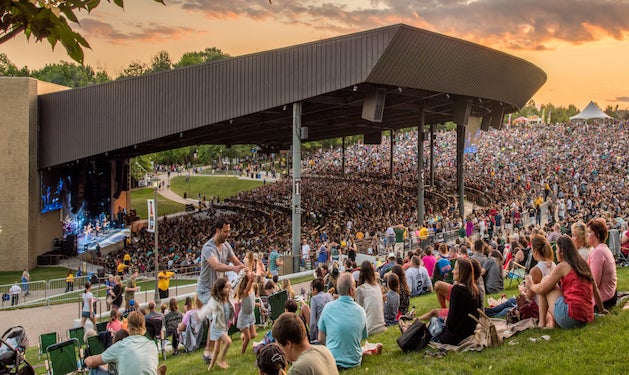The surprise hit of the Woodstock festival had to be Santana, the Latin-rock group that was well-known in San Francisco from their performances at the Fillmore but was virtually unknown to the world at large. Their percussion-driven, Latin-infused music immediately won over the Woodstock audience, making their set one of the standout performances of the festival.
Day Two, Performer 3: Santana
Performed Saturday afternoon, August 16, 2:00–2:45 pm
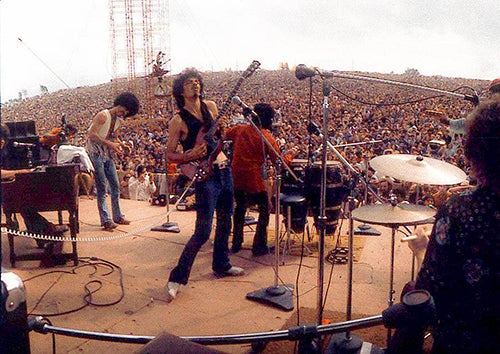
Santana on stage at Woodstock. Left to right: Gregg Rolie, Michael Carabello, Carlos Santana, Jose "Chepito" Areas, Michael Shrieve, and David Brown. Photo © Jim Marshall.
Santana Band Members
- Carlos Santana: guitar
- Gregg Rolie: vocals, keyboard
- David Brown: bass
- José "Chepito" Areas: timbales, congas, percussion, trumpet
- Mike Carabello: timbales, congas, percussion
- Mike Shrieve: drums
Santana Woodstock Setlist
- Waiting
- Evil Ways
- You Just Don't Care
- Savor
- Jingo
- Persuasion
- Soul Sacrifice
- Fried Neck Bones and Some Home Fries
Carlos Santana was born in Autlán, Mexico, one of seven children. His father, José, was a musician, playing violin wherever he could find work. His mother, Josefina, moved the family to Tijuana, where José was working, when Santana was eight. His father taught Carlos how to play the violin, and he began playing for the tourists for change. He gave up the violin for the guitar and began sitting in with the popular bands playing in the Tijuana nightclubs.
By the time Carlos Santana reached his teens, the family moved again, this time north of the border to San Francisco, where Santana nurtured his love of the blues and honed his craft on the guitar. He and keyboardist/vocalist Gregg Rolie formed the Santana Blues Band in 1966 with a changing roster of other musicians. Bass player David Brown and percussionist Michael Carabello were early members of the band, though Carabello left for a time. In June 1968, the band, now known simply as Santana, played its first gig at Bill Graham’s Fillmore West, with Carlos Santana on guitar, Gregg Rolie on keyboards and vocals, David Brown on bass, Bob “Doc” Livingston on drums, and Marcus Malone on percussion. The audience responded to their performance with a standing ovation, and the band was signed to a recording contract with Columbia Records. The recordings for an album recorded live at the Fillmore were not released for almost 30 years.
Malone had to leave the band in 1969 after being convicted of manslaughter, and Livingston was fired after an argument in the studio. Drummer Michael Shrieve, who had caught the band’s eye two years earlier sitting in with Mike Bloomfield, was walking into the studio as Livingston was walking out, and the band invited Shrieve to join the band on the spot. Percussionist Michael Carabello returned to the band about that time, as well, and Nicaraguan percussionist José “Chepito” Areas was added to the lineup. The “classic” Santana lineup was in place. The band began recording their debut album in May 1969, completing it in one month, but their lives and careers changed before Columbia could release the album.
The summer of 1969 was a golden time for rock festivals, and a sort of festival circuit drove the concert scene that summer. The organizers of the Woodstock festival were booking from the same pool of performers that the other festivals were drawing from, and, of course, they wanted Jefferson Airplane and the Grateful Dead on the bill. Fillmore promoter Bill Graham managed both bands, and he made it a requirement that in order to get the Airplane and the Dead, Woodstock Ventures would have to book Santana. The deal was made, and Santana would perform at Woodstock. As drummer Michael Shrieve recounts the story:
"We had no record out but we were touring and we were playing with all the big groups…Chicago and The Airplane and Janis and Big Brother and whatever the festivals had. And we were good. We were holding our own. And even though we didn’t have a record, when we played people liked it.
So Woodstock was added and we had about a two week break, but we were on the East Coast. We rented a house in Woodstock and we…set the gear up in the house and we’d be playing, which we always would be doing. But coming up to the concert we started hearing the TV reports and radio reports about traffic. And then when it came up to it, closer and closer, it became a bigger and bigger deal…you were hearing the traffic on the interstate is ridiculous.
And then finally you heard that it was closed down, that in fact we couldn’t get in unless we went in on a helicopter. So when it came time for Santana to play we were surprised when Bill Graham and several of the other promoters—I think John Roberts and Michael Lang, perhaps, came up and said, “You have to go on now. There’s been a change in schedule.” And so it did throw us off a bit. But, you know, we were in no position to do anything about it. But some of the band had taken some of the mescaline going around and was planning on it being later. …But what I noticed, like getting up there and playing was, it was like standing at the ocean. As far as you could see, except for the horizon, was people. So in my mind it felt like, Wow, this is like being at the ocean, since I was an ex-surfer, I guess. And it was sort of, you know, this is just like the ocean, except its people."
As Santana took the stage at Woodstock, some people in the audience had already heard of this great Latin band with the Mexican lead guitarist, and a few had actually seen them perform, but most of the half-million people in the audience had no idea what to expect—what amounted to a preview of their soon-to-be-released debut album (all but their encore were from the Santana album). They opened with an instrumental, “Waiting,” and from the start, Gregg Rolie’s keyboard created the framework for the other musicians’ groove. Carlos Santana followed along on rhythm guitar before breaking into his powerful solo. Before beginning their next song, Rolie announced to the audience that it was great to be in New York, having second thoughts when he asked, “we are in New York, yeah?” The next song, “Evil Ways,” continued to showcase the tight, professional musicianship of the band, even if the hallucinogen (Carlos later insisted that it was LSD, not mescaline) that turned Carlos Santana’s guitar into a snake was giving him some trouble during his solo. The audience responded with polite applause as the band tuned up for the next song, “You Just Don’t Care.” Rolie’s voice began to crack a bit on the high notes, but the audience was swept up by the band’s performance, so it didn’t seem to matter. The band then played another instrumental, “Savor,” a song that features lots of organ and percussion and an extended drum solo by Michael Shrieve. A quick “thank you from San Francisco” from Rolie before the band launches into “Jingo,” lush with Leslie-infused organ, a driving beat, and Chepito on trumpet.
Throughout their set, the band performed as a tight unit, feeding on each other’s energy, obviously enjoying themselves. During the next song, “Persuasion,” Rolie went crazy on the Hammond B3 while Carabello enthusiastically clapped and pounded on his congas. People at the side stage were dancing and clapping, and the audience responded in kind. With the excitement ratcheted up, Carabello and Areas began the intro percussion to the band’s triumph, “Soul Sacrifice,” another instrumental. Whatever nerves or chemical issues the musicians had at the beginning of their set were gone, and the music soared. As each band member got his own solo, the tribal rhythms got the audience on their feet, clapping, dancing, and losing themselves in the music. Michael Shrieve took his solo and gave the world one of the most memorable drum solos of all time, and Carlos Santana tied it all up with a bow with his spectacular work on his Gibson SG. The audience, hands clapping above their heads, shouted, “More, more, more, more.” The band returned to the stage for their encore to play the only song that would not appear on their upcoming album, “Fried Neck Bones and Some Home Fries,” for an amazed and appreciative audience.
Within days of their performance at Woodstock, Santana’s self-titled debut album was released. Word spread about their set at Woodstock, and the album rose to #4 on the U.S. Billboard chart, with the single “Evil Ways” charting in the Top 10. The band continued touring and building a following, appearing at the ill-fated Altamont Free Concert in December 1969.
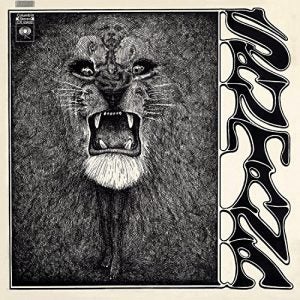
was released days after their
triumphant set at Woodstock.
The band’s second album, Abraxas was released in September 1970 and soared to #1 on the U.S. Billboard chart, and the single from the album “Black Magic Woman” (written by Peter Green of Fleetwood Mac) reached #4 on the charts. Lightning struck a third time in 1971 when the band’s third album, Santana III, charted at #1. This was the last Santana album to feature the “classic” lineup and was the first album to include second guitarist Neal Schon.
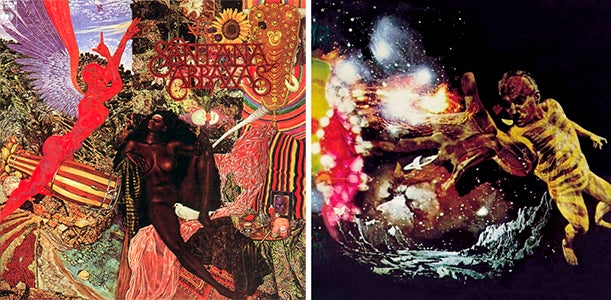
two more albums, Abraxas (Columbia, 1970) and
Santana III (Columbia, 1971)
that both shot to the top of the Billboard charts.
After the release of Santana III, the band began to break up, and band members began to go their separate ways. David Brown left the band to be replaced by Doug Rauch and Tom Rutley. Michael Carabello left to be replaced by Armando Paraza and Mingo Lewis. Gregg Rolie was replaced by Tom Coster on several songs on the fourth album. Carlos Santana released a solo album and a number of albums under the Santana name with various musicians. His music became more experimental and spiritual, and he collaborated with the likes of John McLaughlin, Jan Hammer, Billy Cobham, Stanley Clarke, and Larry Young. Several of his albums were critical successes but commercially unsuccessful, and by the 1990s he stopped recording altogether. He still toured, even playing Woodstock ’94 on the 25th anniversary of the festival that began his meteoric success.
Carlos Santana began another phase of his career in 1998, when he was inducted into the Rock and Roll Hall of Fame with the members of the “classic” lineup. The following year, he released the Grammy-winning Supernatural, which stayed at #1 for 12 weeks, some 28 years after his previous #1 album.
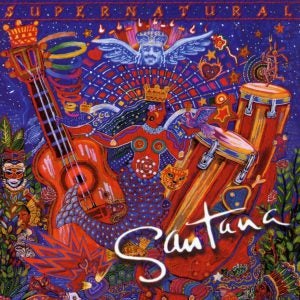
featured collaborations with
Rob Thomas, Eric Clapton, and other artists.
The other co-founder of Santana, Gregg Rolie has continued his career through the years. He was a founding member, along with fellow Santana performer Neal Schon, of Journey, for which Rolie earned a second induction into the Rock and Roll Hall of fame. In 1998, Rolie reunited with Santana bandmates Michael Shrieve, Michael Carabello, and José Areas to form Abraxas Pool. Gregg Rolie is an honorary board member of Little Kids Rock, a nonprofit organization that provides musical instruments and instruction to underprivileged children. Recently he has performed with his own band, The Gregg Rolie Band, and is a regular member of Ringo Starr’s All-Starr Band.
Drummer Michael Shrieve, who had just turned 20 (not 17, as legend claims) when he played Woodstock, stayed with Santana until 1974, when he left to pursue a solo career. He moved to London, where he performed live and did session work with a number of musicians. He was a member of the fusion supergroup, GO, with Stomu Yamashta, Steve Winwood, Al Di Meola, and Klaus Schulze. He played on The Rolling Stones’ Emotional Rescue album and Mick Jagger’s solo album, She’s the Boss, and was a member of Abraxas Pool with former Santana bandmates. He lives in Seattle and regularly plays in the fusion jazz group Spellbinder. Rolling Stone magazine named Michael Shrieve #10 on their list of best drummers of all time.
Conga player Michael Carabello formed the band, Cobra, in 1975, was a member of Abraxas Pool with his former Santana bandmates, and was a member of The Gregg Rolie Band. He lives in Connecticut and teaches percussion.
Percussionist José “Chepito” Areas was in Santana until 1977 and again from 1987 to 1989. He joined his bandmates in Abraxas Pool and released a solo album in 1974. He still performs.
David Brown, bass player and early member of Santana, was the first of the “classic lineup” to leave the band, only to rejoin the band from 1974 to 1976. In the early 1990s, he played in the Mark Castro Band. He died from liver and kidney failure in 2000.
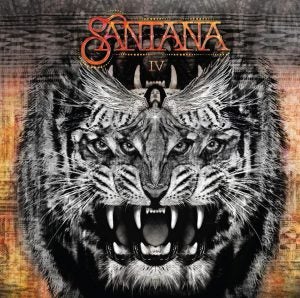
"original" band to carry on where Santana III left off.
In 2013, Carlos Santana began hinting at a Santana reunion, bringing the remaining members of the “classic lineup” together to record an album. That album, titled Santana IV to signal that it was to take up where 1971’s Santana III left off, was released in 2016. The reunited band included Carlos Santana, Gregg Rolie, Michael Shrieve, and Michael Carabello, along with two members of Santana’s current touring band, and the album recaptures much of the magic of the first three albums. The band performed only a few times in support of the new album, much to the disappointment of fans and the band members.
Santana reunited again for a concert commemorating the 50th anniversary of the Woodstock festival in 2019 at Bethel Woods Center for the Arts.
—Wade Lawrence & Scott Parker
